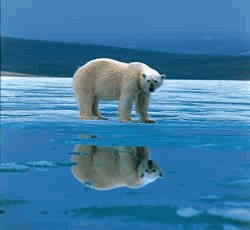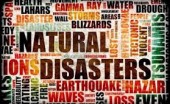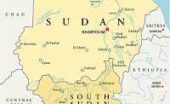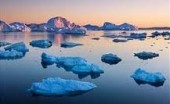Re Ian Bremmer 'Could third-party candidates upend the 2024 US election?' 3 April The current political movement in the USA…
Polar Bears & Climate Change
Written by Diana Thebaud Nicholson // June 5, 2008 // Public Policy, Science & Technology // Comments Off on Polar Bears & Climate Change

June 5
The Race for Survival
(Newsweek June 9) Enlisting endangered species in the fight against global warming is either a brilliant tactical maneuver—or an arrogant abuse of the law.
… And it certainly isn’t any part of Kempthorne’s plan for the polar bear to save the Earth. That was Siegel’s idea: that the law requires the government to protect the critical habitat of endangered species. Ergo, if global warming is threatening the polar bear’s habitat, the government could be forced to crack down on greenhouse-gas emissions, a step that environmentalists consider vital to the survival even of species that live in houses and would never dream of biting the head off a walrus.
May 19
Polar Bear Ruling to Bring Tsunami of Lawsuits: Kevin Hassett
(Bloomberg) — As expected, the U.S. Department of the Interior added the polar bear to the list of threatened species under the Endangered Species Act last week. Even with the Bush administration’s attempt to render the ruling toothless, this action will almost surely go down in history as the turning point in the global warming debate.
The department concluded that the past and projected melting of sea ice in the Arctic poses an immediate threat to the polar bear’s habitat. It pointed to greenhouse-gas-induced climate change as a primary cause for the recession of the sea ice, and emphasized that oil and gas development in the Arctic isn’t the reason the polar bear is threatened.
Georgetown University law professor Lisa Heinzerling summarized the Bush administration’s actions aptly: “The Department of the Interior has, in short, worked very hard to make sure that its listing of the polar bear under the Endangered Species Act does not trigger the usual protections that act provides.”
Indefensible Action
Such an action is logically and ethically indefensible. For the administration to determine that the polar bear is threatened, it had to conclude that global warming will melt the ice that polar bears need to survive. Having reached that conclusion, the Endangered Species Act requires them to take action to slow global warming. They can’t decide not to do their job and enforce the law.
May 18
Not Much Help for the Polar Bear
(NYT Editorial) Boxed into a corner by the courts and its own scientists, the Bush administration agreed last week to place the polar bear under the protection of the Endangered Species Act. The decision was the clearest official acknowledgment that the bear, its hunting grounds diminished by shrinking summer ice, is seriously at risk.
It is not clear that the decision is much of a victory for the bears. The listing appears to offer only modest new protections. United States law already bars the killing of bears. The listing will also prohibit the importing of hides or other trophies from bears killed in Canada.
It does nothing to address the gravest threats to the bears’ survival: oil and gas drilling and global warming. Interior Secretary Dirk Kempthorne said the act — as he interprets it — in no way inhibits oil and gas development in prime polar bear habitat like the Chukchi Sea, where the department recently opened up 30 million acres to exploratory drilling.
May 16
Will Canada deem the polar bear ‘threatened’?
Colby Cosh, National Post
… what’s most interesting is the self-evident desire to evade Canada’s scientific, expert-driven process for determining which species are threatened. In this country species assessments are handled by the Committee on the Status of Endangered Wildlife in Canada (COSEWIC), a heavyweight independent body that “uses a process based on science and Aboriginal or community knowledge to assess species at risk.” So has there been some radical recent change in the attitude of Liberals and animal welfare advocates toward what they like to call “settled scientific consensus”? Any claim by an observer of the polar bear issue that future global warming is purely hypothetical and not yet predictable with confidence would be met with shrieks of rage against “climate deniers.” But these same acolytes of the Holy Temple of Science are now urging John Baird, the Environment Minister, to trash the recommendations of his own scientific committee on endangered wildlife.
COSEWIC has not shut the door on upgrading the bears’ risk status to “threatened” down the road, but a review of their “of concern” designation was completed just last month, so the underlying data are virtually up to the minute. Of the 13 Canadian subpopulations of polar bears, seven are described by COSEWIC as “stable or increasing”; just two are in a confirmed decline that can be “partly attributed” to meagre sea ice cover.
The polar bears are doing just fine says the National Post’s Peter Foster, managing to trash Al Gore and cheerlead for Bjorn Lomborg, along the way continuing to trumpet his denial of anthropogenic climate change.
Alaska hunters fret about polar bear ruling
The U.S. decision to list polar bears as a threatened species has indigenous Alaskans worried that hunting the animals they rely on for food and warmth could be banned.
Polar bear hunters say they’ll seek new markets after bears declared threatened
(CP) Inuit who lead American clients on polar bear hunts say they’ve already lost money as a result of Wednesday’s decision in the United States to add the Arctic predators to a list of threatened species.
And although the Inuit hunters say they’ll try to bring in customers from other countries, American outfitters who organize such trips don’t hold out much hope.
May 15, 2008
Tougher Canada action needed on polar bears: greens
OTTAWA (Reuters) – Two prominent green groups on Thursday said Canada should follow the lead of the United States and take action to protect polar bears, which are threatened by melting ice.
Washington said on Wednesday it was listing the bears as a threatened species. Although Canada is home to around two-thirds of the world’s 25,000 polar bears, Ottawa has not formally declared them in any kind of danger.
“Canada is lagging behind in its global responsibility to protect wildlife,” said Rachel Plotkin, a biodiversity policy analyst at the David Suzuki Foundation.
An independent Canadian scientific advisory committee recommended in 2005 that Ottawa list polar bears — which are divided up into 13 distinct populations across the Canadian Arctic — as a species of special concern.
The then Liberal government asked for a reassessment but the committee said last month it was sticking to its position.
Environment Minister John Baird, part of the Conservative government that took power in 2006, will receive the new report in August.
He indicated on Wednesday he would agree to list bears as a species of special concern and said stronger measures might have to be taken to help the weaker sub-populations.
Polar Bears Listed As US Threatened Species
(Reuters Planet Ark) WASHINGTON – Polar bears were listed on Wednesday as threatened under the US Endangered Species Act because their sea ice habitat is melting away.
However, this new protection does not aim to reduce climate change — which environmentalists see as the cause of the bears’ disappearing habitat — or Arctic drilling for the fossil fuels that spur the climate-warming greenhouse effect.
In announcing the government’s decision one day ahead of a court-ordered deadline, Interior Secretary Dirk Kempthorne acknowledged that human-caused greenhouse gas emissions contribute to the global warming that is damaging the polar bears’ habitat.



